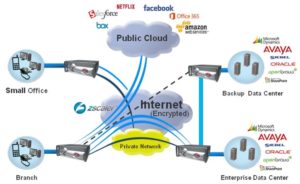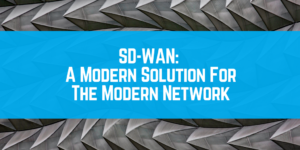SD-WAN can jump start digital transformation initiatives
SD-WANs can jump start digital transformation initiatives
ZK Research data shows that 94% of companies have at least one digital transformation initiative underway. The research firm also found that a shocking 75% of CxOs admittedly do not know what their industry will look like or who their competitors will be in five years. This means that success in the digital era isn’t based on the company that has the lowest prices, best products, or even the top people.
Sustaining a market leading position is predicated being agile and having the ability to quickly adapt the business to seize new opportunities faster than the competition. The digital era is Darwinism at its finest – it’s the most adaptable that survives and the rest are fodder for the winners. This is why the transition to digital is at the top of every CxOs priority list.
While the concept of becoming digital makes sense, executing a plan to transform can be quite intimidating for most organizations, particularly well established businesses that haven’t relied on technology in the past, as there’s a perception that digital transformation requires big moonshot-like initiatives and investments. Retailers believe they need to Amazon over night while taxi and car service companies want to Uber up. The fact is, while there is urgency, there’s no need to try and make that hard pivot overnight. In fact, moonshots often fail and business and technology leaders need to understand that digital transformation is more about executing manageable chip shots rather than complex moonshots.
The chip shot reference should make it clear that I’m an avid golfer and I’ll extend the analogy further by pointing out digital transformation should be done one shot at a time and SD-WANs can facilitate that. For example, a bank might put a futuristic plan together for “digital banking” that involves a number of new technologies, such as virtual reality, digital signs, Internet of Things, digital mirrors and other advanced technology. One might look at the end game and find the journey so daunting that it paralyzes them.
A better way to approach this type of digital plan is through a series of smaller initiatives where the deployments can be controlled and managed the ROI easily calculated. For example, the bank may choose to put video terminals in an office at all branch locations, allowing customers to talk directly to product experts, even if that branch has no local personnel with that knowledge base. This is a small, manageable change that’s easy to implement with a measurable ROI. Without video, experts travel from branch to branch limiting the number of appointments per day to just a few. With video, product experts can be available all day long giving the bank the ability to sell more products to more people.
What does SD-WAN have to do with this? The answer is everything! We live in a customer experience driven world where a good customer experience leads to loyalty and a higher share of wallet. A bad experience will drive customers away, perhaps never to return. One interesting factoid that supports this, comes from ZK Research, which found that two-thirds of millennials changed loyalties to a brand in 2018 because of a single bad experience.
Here is where a little SD-WAN will pay big dividends as video requires a high quality, low latency and jitter free network. Imagine being in a bank, sitting a high end customer down in front of a terminal only to experience a horrible video experience. That customer may never try and service again. Instead of fueling customer acquisition might be chasing them away. Also, the bank may be less likely to recommend it, giving the impression the project was a waste.
The key takeaway here is that success with digital transformation is dependent on network modernization, particularly the WAN where bandwidth isn’t a bountiful commodity. Businesses require an agile, secure and dynamic network capable of supporting whatever applications are deployed. Legacy WANs cannot support digital businesses, but SD-WANs are built from the ground up with agility and flexibility in mind. With the banking example, the video service requires flawless connectivity and SD-WANs can automate the process of prioritizing traffic or reserving bandwidth to ensure the quality remains high. When the call is over, the reservation on bandwidth needs to be removed to not impact other applications. These processes on a legacy network, using manual processes are slow, time consuming and error prone and will likely lead to application problems. SD-WANs make this touch free.
The digital era has arrived and IT leaders need to be prepared. This requires agility and dynamism at the network layer as it’s the resource that connects everything. SD-WANs create a foundation that enables businesses to accelerate their digital efforts.
FatPipe Networks have been developing and innovating SD-WAN solutions for 18 years. For the best of breed SD-WAN solutions, call FatPipe today at 801-683-5656. FatPipe Networks www.fatpipeinc.com









